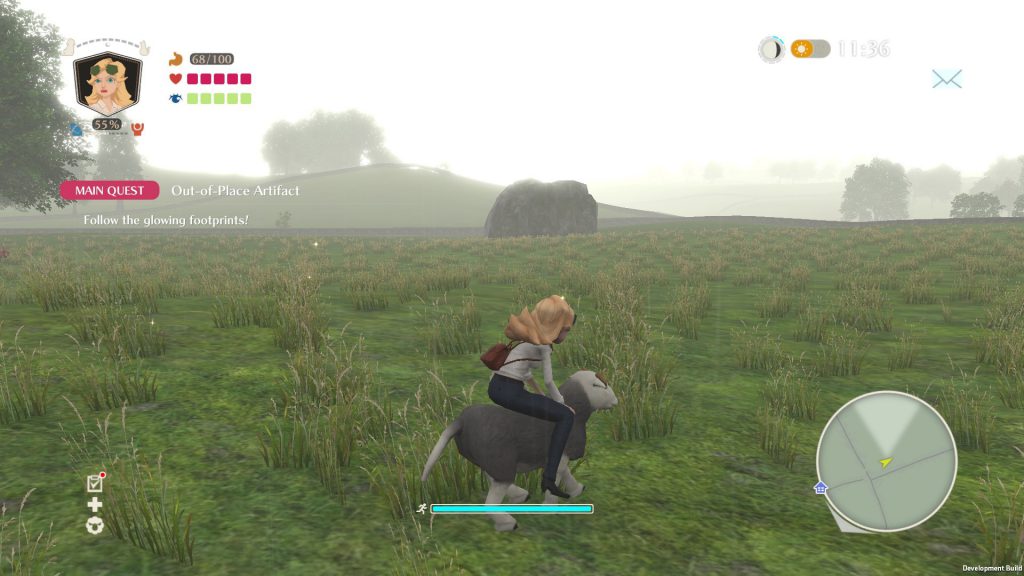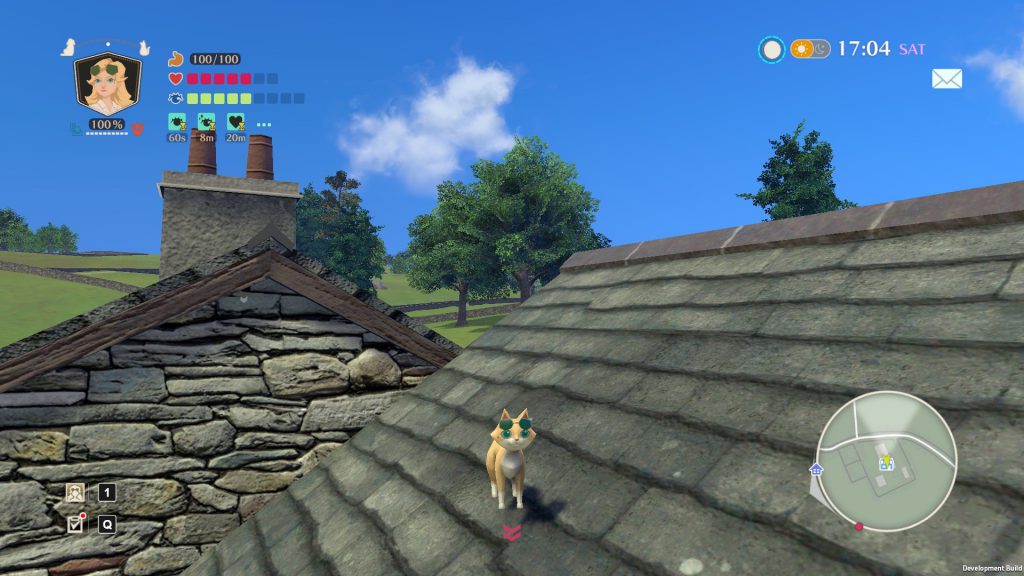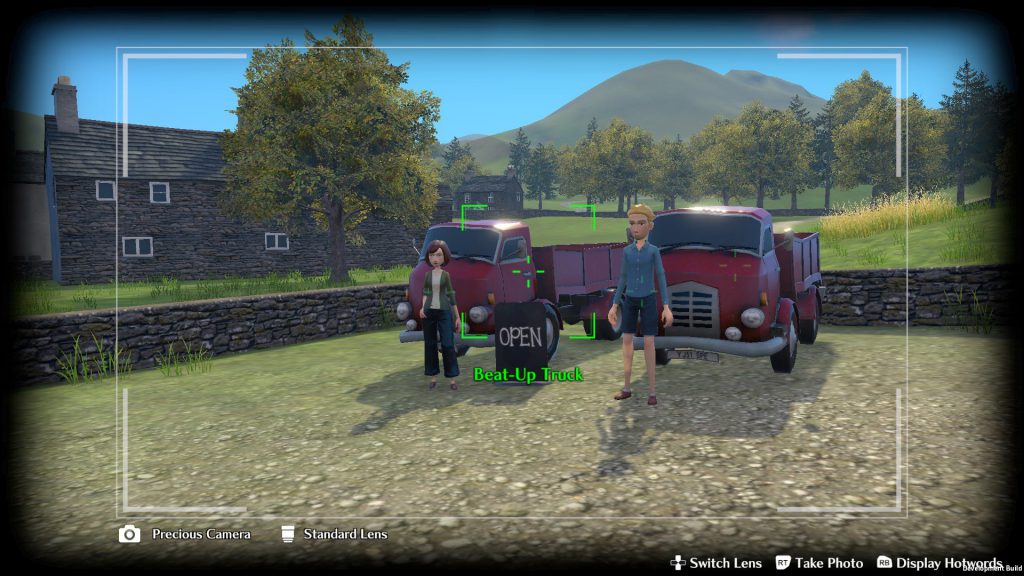The Good Life is a Bonkers Slice of Life Dive into British Mythology
Labelled as a murder mystery, ‘Debt Repayment RPG’ The Good Life is somehow even more confusing than the description given by the developers. That said, if you persevere through the onboarding and tutorials, and punch ahead through the story, you’ll find yourself in a fun, slice-of-life world that darts from taking itself too serious to being an almost nonsensical, chaotic exposition jaunt.
Before we start, I should make something abundantly clear. Just like SWERY’s previous titles, D4 and Deadly Premonition, The Good Life is bound to be incredibly divisive. There’s something in these games that are a little bit crazy, and very nonchalant, while also taking itself quite seriously at times. If you can deal with that — five hot minutes between a cold-blooded murder of a character and then racing around on a tamed sheep — then The Good Life might well be for you. It’s a slice of life game, but it channels an old hope for open-world games that were abundant during the age of the Dreamcast and PS2… Games had been relatively linear before then, without many distractions or mini-games littering their worlds. In fact, it was only really RPGs and, well, Crime-Sims, that had that level of distraction until the likes of Yakuza and Shenmue appeared on the scene.
But, The Good Life also adds in a few modern conventions from survival games. There’s Hunger, Tiredness, Mood, Stress and a fair few other things at play, and all of this can only be sated through scavenging, crafting, cooking or trading. This puts incredible pressure on your finances, and you start with little more than a 30m debt. Thankfully you’re in Rainy Woods to try and solve that problem; you — as New York Journalist Naomi Hayward — have to find out what makes it The Happiest Place on Earth, and if you do so then the agency you are working for will clear your debts. You can also earn money by completing side quests and certain story notes, as well as by taking pictures and uploading them to in-game social media. Think of the latter as similar to the Dead Rising photography mechanics; It’s well-executed and easy enough to earn enough to feed yourself.
Soon enough you can transform into a cat and dog, you can ride sheep around the map, and you can teleport between shrines. Traversal (excuse the pun) transforms the map, and as you progress through exploring the world around Rainy Woods you’ll unlock campsites, passageways and traders. It’s a well-designed world, as a matter of fact, it’s arguably a well-designed game, it’s just that there is so much at play at any given point in time. This is exemplified by the sheer amount of side quests that are available at any time, not just from citizens but also from the newspaper you are working for, the cat shrines, and from beyond the grave. Whew. For the most part, this is just a bit of a grind, most of them require you to collect or photograph a certain item and then return to the (waypointed) quest giver and hand in the quest. Sometimes you’ll be given a quest and have already completed it.
There’s no doubt that it’s hard to create and populate, a vast world with side-quests and content, but The Good Life also does a somewhat poor job of structuring how players unlock elements and how it introduces mechanics. If you do a certain Story Route before another then you’re stuck plodding, poor, through the map to your destination, while another route can quickly furnish you with a mass of fast-travel options.
Money is arguably the biggest driving factor in the game, and while the order and structure of how access to certain things are unlocked may be somewhat fun-stifling, the way that money is managed in The Good Life is incredibly smart. Most open-world games have money as an initial obstacle that rapidly becomes almost meaningless by the midpoint of a game — GTA and Skyrim are perfect examples, as you start off barely able to get by financially, but you very quickly become able to buy luxury items through simple looting and repurposing things you find around the world.
There were only a couple of points through my lengthy playthrough of The Good Life where I felt like I had a decent amount of money; be that because of the need to medicate following (sometimes arbitrary feeling) injuries, or because of the very low resale value of in-game items. In fact, even if you do go and mine diamonds, it still takes a good few days of doing so (assuming you rotate mines, as items take a while to replenish) for you to gain a decent pot of funds.
Mining diamonds comes later though, before that you have to deal with one of many dives into a mythology driven, British twist on Weird West. Vampires, aliens, mad scientists, talking swords all populate the story, and it just as quickly picks up the chaos as it puts it down. It’s a lot of fun, and —frankly — feels nice to have it grounded in a less traditional history… even if most of the rest of the game is a caricature of rural England.
I spent a lot of my time sourcing and making my own meals rather than shopping at restaurants and cafes due to financial issues. Your camera can break, you can grow sick in the cold (if not in animal form) and if you get overtired then you can end up with all sorts of expensive injuries. But, this is a point where the game’s own systems work against each other; in order to unlock new cooking recipes, you need to buy them a certain amount of times.
With that in mind, I rarely unlocked new recipes as I was trying to save money by cooking my own meals, this, in turn, meant that I couldn’t do much with many of the ingredients, vegetables and meats that I had. It’s great that you can upgrade your house to have a substantial garden, and you can plant seeds and herbs to facilitate your own cooking, but…
And that’s the thing with The Good Life. It felt like it worked against itself so much at times. There was an early sidequest where it wanted me to find and photograph ten sheep in one picture, around the same time I had a quest to tame and house sheep. With that in mind I collected the maximum amount of sheep that my pen could house, eight, and then angled a photo to capture two more sheep in the background. It didn’t work. I guess it doesn’t work with tamed sheep or something. I was frustrated, I’d never seen ten sheep out in the open world. Another quest asked me to photograph a set of furniture, I set off to collect the furniture assuming that it was simply a case of buying it. Nope. It became clear that I had to craft it and some of the items required were items I had never heard of, and clearly required crafting itself, but I couldn’t find where I could craft it. I shelved these two missions, accidentally stumbling up 10 sheep and the item out in the wild, photographing the former and arduously dragging the latter to a storage chest so that I could put it into my garden back home.
But, perhaps the biggest takeaway from the last paragraph shouldn’t be that The Good Life can be obtuse and confusing, it’s the fact that I kept playing it for long enough for those solutions to appear. Although it’s frustrating at times, there’s a lot of gameplay and a massive amount of things to do. It’s also quite a funny game — both in that it’s odd, and it’s entertaining. Most of the characters are caricatures or are broken in some way, and that only increases as you meet or learn more as the story progresses. The world itself is a character too, and as soon as you unlock ways to get around it completely transforms. You go from being a small fish in a massive lake to knowing your way around, knowing how long it takes to get places, and knowing where to go to get a trending photo.
Does that mean that I recommend The Good Life? Sure, if you’ve got patience, don’t mind a little strangeness and are not put off by a few bugs, glitches and oddities then this ‘debt simulator’ is a good way to spend more than a few hours. I enjoyed my overall time with it, but I did spend pockets of that time frustrated by awkward signposting or being given too much to handle at certain points.
The Good Life is available now on PC, Xbox, Playstation and Nintendo Switch.





Comments are closed.